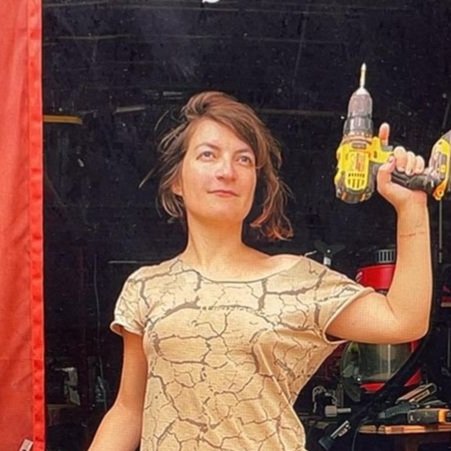Modern Art, Ancient Medium
Charcoal may be the world’s oldest artistic material. Prehistoric cave art in Namibia, France, Australia, and Mongolia were all made in part with charcoal, a substance that is produced when fire evaporates water and other particulates from wood leaving behind a smudgy residue that is nearly pure carbon.
“Carbon is a physical force and it relates to the very first thing humans ever wrote,” says Sofy Yuditskaya, a visual and sound artist and PhD candidate at New York University. A recipient of a Fulbright-Nehru fellowship and currently working in Bengaluru, she explains the connective process of building a fire, cooking food, using the ash to wash the dishes and then reducing the wood down to charcoal to use in her art. Yuditskaya not only uses the carbon residue as a drawing medium, but also to make electrically conductive paint.
Carbon’s atoms can combine into numerous forms known as allotropes. When carbon is in the form of charcoal (an amorphous allotrope) it has mobile electrons in its outer valence shells. These free electrons allow carbon (in this form) to conduct electricity. Yuditskaya mixes charcoal with glue as a binder to make conductive paint allowing her to paint a type of wiring or circuitry right onto her artwork.
For example, Yuditskaya might paint two parallel lines of her carbon paint and then attach the wires of a small bulb to each line. She could then create a shape that can connect the bulb to one section of the art piece and connect a battery to the opposite side through the carbon paint. In essence, she can create a set-up in which a viewer's interaction closes a circuit, therefore, turning on the light. The use of light though is just a visual example of what this carbon paint can accomplish.
Yuditskaya currently uses the paint to make artwork that creates sound. For one of her current projects, Yuditskaya works with small and basic theremins that she calls ‘Bareemins’. A theremin is an electronic instrument that produces sound through radio waves and electromagnetic fields. Yuditskaya attaches small theremins to her carbon paintings to produce an oscillating electrical sound that brings to mind robotic birds or the sound pixelated ocean waves might make — blurring the lines between paintings and musical instruments.
Yuditskaya uses conductive paint to create an image and then takes the theremin—essentially a small electronic box fitted with a speaker and two charged connectors—and “plays” the painting.
“Carbon is the most basic thing you can use to communicate and yet it also conducts electricity and produces its own electromagnetic field. You can transform that into sound. It’s cosmic,” says Yuditskaya.
One connector hooks to a section of the carbon painting, while the other connector can be moved along other painted areas. The flow of electrical current as the second connector passes over carbon paint causes the electronic box to emit a series of sounds. Yuditskaya explains that in essence, the painting acts as a musical score representing music to be played. When she touches areas on the score with the connectors, she completes a circuit which then produces sound. This means the painting is both musical score and musical instrument. “I like the idea of something describing itself and being itself at the same time” says Yuditskaya.
Check out more of Sofy’s work, or get in touch
https://www.usief.org.in/scholar-profile/scholarprofiledetails.aspx?fellowid=12623
Instagram @_the_s0urce_
Related Resources
-
What Is Electric Paint: The Composition and Application of Conductive Paints
-
-
-
This series has been conceptualised in collaboration with Jay Barber, a 2023 Fullbright-Nehru Academic and Professional Excellence Teaching Scholar. She has authored all the Carbon Flash writing pieces, and facilitated all the complementing interviews for the Carbon Flash videos as well.




